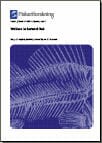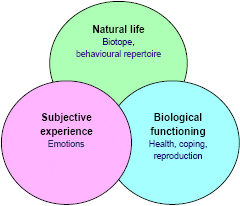
Summary
The strategic institute programme (SIP) ”Welfare in farmed fish” was financed by the Research Council of Norway, for the five years period from 1 January 2001 to 31 December 2005. The core partners in the SIP were the Norwegian Institute of Fisheries and Aquaculture Research (Fiskeriforskning) in Tromsø, Institute of Marine Research (IMR) in Bergen and the Norwegian University of Life Sciences (UMB) at Ås.
The general aim of the programme was to increase the basic competence about fish welfare by the integration of scientific fields such as fish behaviour, fish physiology and fish health as tools to understand welfare related topics in farmed fish, and to use these tools to evaluate fish welfare based on the animal’s behavioural needs.
This report aims at giving the reader an insight in the scientific work carried out in this strategic research programme and the progress made in this relatively new scientific field of aquaculture research. Chapter 3 gives a conceptual and theoretic background of animal welfare, and chapter 4 describes the methodological progress financed in part by the programme. Chapter 5-11 reports results and progress related to both basic and more applied fish welfare research which gives an illustration of the interdisciplinary nature of the subject.
Contents
- INTRODUCTION
- ABOUT THE AUTHORS
- ANIMAL WELFARE - A NEW CONCEPT IN AQUACULTURE AND FISHERIES
- Animal welfare – what is it really?
- Definition of animal welfare
- Welfare in fish
- Welfare indicators and monitoring in fish farming
- References
- DEVELOPMENT OF RESEARCH FACILITIES AND METHODS IN FISH WELFARE
- Fish Behaviour Laboratory: Measuring individual traits under controlled conditions
- The fish learning laboratory
- The water quality laboratory: Controlled manipulation and assessment of environmental parameters
- The cage environment laboratory: Behavioural studies in a realistic farm environment
- Non-invasive methods for assessment of fish welfare
- References
- REPRODUCTIVE SUCCESS, SPAWNING BEHAVIOUR AND WELFARE IN BROOD-STOCKS
- Introduction
- Background on factors influencing reproductive success and behaviour
- Reproductive behaviour and mating success in cod
- Social behaviour and reproductive hormones in Arctic charr during a spawning season
- References
- PRENATAL STRESS IN FARMED SALMON; IMPACTS ON PHYSIOLOGICAL, MORPHOLOGICAL AND BEHAVIOURAL CHARACTERISTICS
- Physiology and morphology
- Stress proteins
- Behaviour
- References
- LEARNING AND FISH WELFARE: LEARNING ABILITIES AND CONSTRAINTS IN COD AND HALIBUT
- Introduction
- Learning in cod
- Classical conditioning of halibut
- Differences in cognitive abilities in cod and halibut?
- What does it mean that cod can be trace conditioned?
- References
- SOCIAL INTERACTIONS BETWEEN JUVENILE FISH AND INDIVIDUAL VARIATION IN BEHAVIOUR DURING THE ON-GROWTH PHASE
- Introduction
- Motivational background for agonistic interactions
- The effects of winning contests on subsequent social interactions in Arctic charr
- Effects of size differences and nutritional state on aggression and threat-sensitive behaviour in juvenile cod
- References
- WATER QUALITY PREFERENCE
- Introduction
- Temperature preference in Atlantic cod
- Temperature preference studies with other species
- Studies of tolerance and behavioural preference of ammonia
- References
- OPTIMISING INTENSIVE REARING CONDITIONS TO SECURE FISH WELFARE AND HEALTH
- Introduction
- Does intensive farming reduce the welfare status of salmon smolts?
- Do high carbon dioxide concentrations and acid water affect the welfare of Atlantic salmon?
- Do high oxygen and carbon dioxide levels affect the welfare status of salmon smolts?
- References
- EFFECTS OF THE CAGE ENVIRONMENT AND SOCIAL INTERACTIONS ON THE SWIMMING BEHAVIOUR AND WELFARE OF ATLANTIC SALMON
- Microhabitats in big volumes
- The pycnocline and the environmental quality of a site
- Social environment, stocking density, and swimming behaviour
- Swimming and feeding behaviours in a uniform physiochemical environment and a natural photoperiod
- Effect of behavioural thermoregulation and phototactic behaviour on swimming depth and schooling density
- Welfare of caged salmon
- Practical implications
- References

Further Information
To continue reading this article, click here (PDF)
January 2006

